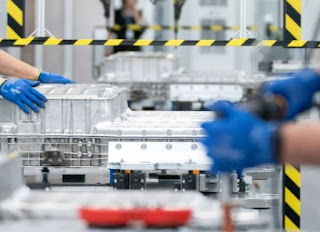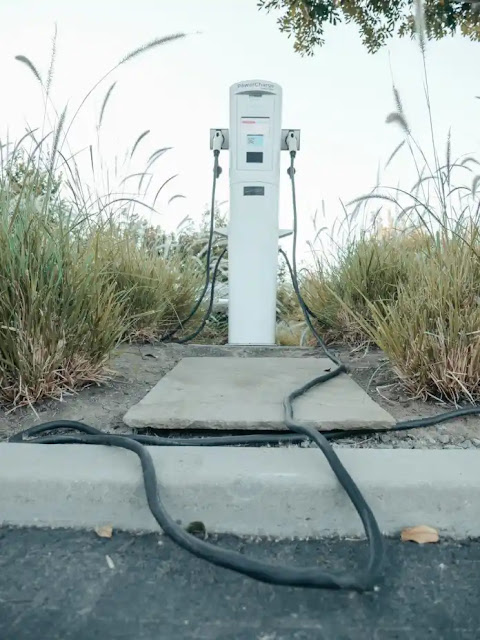DC Charging Sockets For Electrical Vehicle
Electric Vehicle
Connector: A device that,
by insertion into an electric vehicle inlet, establishes an electrical
connection to the electric vehicle for the purpose of power transfer and
information exchange. This device is part of the electric vehicle coupler.
Virtual Classroom Training
EV Technology and Business Management - Techno Commercial Training
Electric Vehicle Coupler: A
mating electric vehicle inlet and electric vehicle connector set.
(A) Polarization:
The electric vehicle coupler shall be polarized unless part of a listed
electric vehicle charging system or an electric vehicle supply equipment system
(B) Noninterchangeability:
The electric vehicle coupler shall have a configuration that is
noninterchangeable with wiring devices in other electrical systems.
Nongrounding-type electric vehicle couplers shall not be interchangeable with
grounding-type electric vehicle couplers.
(C) Construction and
Installation: The electric vehicle coupler shall be
constructed and installed so as to guard against inadvertent contact by persons
with parts made live from the electric vehicle supply equipment or the electric
vehicle battery.
(D) Unintentional Disconnection:
The electric vehicle coupler shall be provided with a positive means to prevent
unintentional disconnection.
(E) Grounding Pole:
The electric vehicle coupler shall be provided with a grounding pole, unless
provided as part of a listed isolated electric vehicle charging system
(F) Grounding Pole
Requirements: If a grounding pole is provided, the
electric vehicle coupler shall be so designed that the grounding pole
connection is the first to make and the last to break contact.
Electric Vehicle Inlet:
The device on the electric vehicle into which the electric vehicle connector is
inserted for power transfer and information exchange. This device is part of
the electric vehicle coupler. For the purposes of this Code, the electric
vehicle inlet is considered to be part of the electric vehicle and not part of
the electric vehicle supply equipment.
Charging Connector
Industry Standards
Society
of Automotive Engineers (SAE) Recommended Practice is intended as a guide
toward standard practice and is subject to change to keep pace with experience
and technical advances.
SAE J1773 – SAE Electric
Vehicle Inductively Coupled Charging-
Two
major standards for power connectors are SAE J1772 and CHAdeMO. For
standardization within North America, in October 2012, the Society of
Automotive Engineers (SAE) completed a new standard connector, SAE J1772 Combo,
which combines AC and DC charging capability (figure 6).[1]
Major Japanese EV manufacturers use CHAdeMO; fast charging stations with these
connectors are located throughout the United States and 50 other countries.[2]
This standard of electrical connection has an additional charging method that
uses the DC pins in the CHAdeMO connector for DC fast charging.[3]
Additionally, Tesla, Inc. has a DC charging connector unique to its vehicles
and charging stations. These unique connectors can use adaptors, which attach
to the connector to charge at SAE J1772-type stations.[4]
Operation of a J 1772
charging station
When the charging connector
(see Figure) is in its holster on the station, both it and the cable are
completely de-energized and cannot be energized. When it is inserted into the E
V socket (see Figure 4), the connection is detected by the charging station,
which communicates its maximum current to the E V.
[1] SAE. (2012). “SAE International Releases New
Fast-Charging Combo Coupler Standard (SAE J1772) for Plug-In Electric and
Electric Vehicles.”
http://www.sae.org/servlets/pressRoom?OBJECT_TYPE=PressReleases&PAGE=showRelease&RELEASE_ID=1897.
Accessed July 11, 2017.
REMA EV. (2012). “DC Fast Charge: SAE J1772TM Fast
Charge Connector (CSS 1.0).” http://rema-ev.com/dc-fast-charge/. Accessed
October 1, 2016.
[2] CHAdeMo.
(2017). “North American Map; Fast Charger Map (US).”
https://www.chademo.com/about-us/fast-charger-maps/north-americanmap/. Accessed
February 2, 2017.
[3] Blink. (2016). “Blink DC Fast Charger.”
http://www.blinknetwork.com/chargers-commercial-dc-fast.html. Accessed October
1, 2016.
[4] Tesla. (2017). “Charging: Charge at Home.”
Tesla. https://www.tesla.com/charge-at-home. Accessed May 26, 2017


